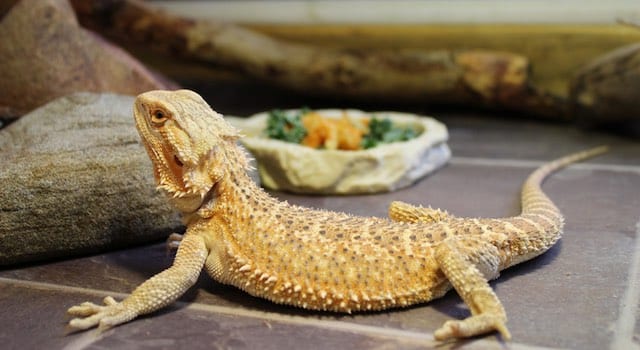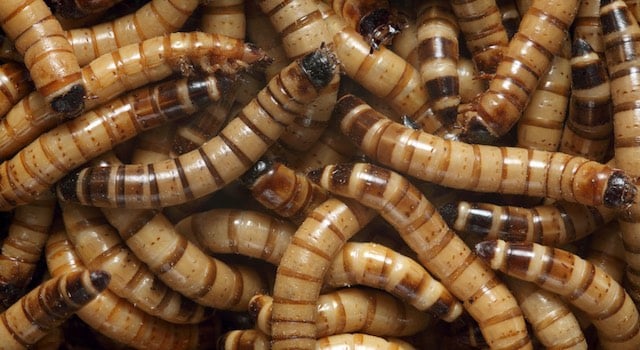
Introduction to Vegetables for Bearded Dragons
The right diet can do wonders for your bearded dragon’s overall health and well-being. These reptiles are omnivores and eat a varied diet containing plant-based foods and insects. Vegetables for bearded dragons provide essential vitamins, minerals, fiber, and antioxidants that keep them healthy. They must be included in a bearded dragon’s diet to prevent nutritional imbalances and deficiencies.
Nutritional Needs of Bearded Dragons
Bearded dragons should eat vegetables at any stage of their life. However, adults should have more plant-based foods in their diet compared to hatchlings and juveniles. Hatchlings and juveniles eat more insects because they need high amounts of protein to support their rapid growth and development.
Adults, on the other hand, should eat a diverse selection of vegetables and fruits for important nutrients. Their metabolism also changes as they mature and adapt to having more plant-based foods in their diet. Bearded dragons must eat vegetables to maintain a healthy calcium-to-phosphorus ratio for bone and muscle health. Plus, vegetables help prevent obesity, which could result from a high-protein diet in fully-grown adult bearded dragons.
Other than insects, veggies, and fruits, bearded dragons need calcium and vitamin D3 supplements included as part of a balanced diet.
Suitable Vegetables for Bearded Dragons
Leafy Green Vegetables for Bearded Dragons :
The best leafy green vegetables for bearded dragons are nutrient-dense, packed with essential vitamins and minerals, and have a low water content. They should also have a calcium-to-phosphorus ratio of about 2:1, which is the ideal ratio for healthy bones and muscles. Leafy green vegetables can be fed daily in addition to insects.
- Mustard greens
- Kale
- Turnip greens
- Chicory
- Romaine lettuce
- Cauliflower
- Radishes
- Bok choy
- Carrot tops
- Endive
- Alfalfa sprouts
- Cabbage
- Broccoli
- Watercress
- Dandelion greens
- Escarole
- Red and green lettuce
Other Types of Safe Vegetables for Bearded Dragons:
- Yams
- Pumpkins
- Yellow squash
- Zucchini
- Carrots
- Parsnips
- Celery
- Butternut squash
- Bell peppers
- Lentils
- Cucumbers
- Sweet potatoes
Safe Vegetables for Bearded Dragons in Moderation:
The following vegetables are safe for bearded dragons to eat in moderation. They should only be fed in small amounts because they are high in oxalates, which bind calcium and prevent proper absorption.
- Parsley
- Beet greens
- Collard greens
- Swiss chard
- Spinach
Nutritional Value of Common Vegetables for Bearded Dragons
Here’s an overview of the nutritional value of common vegetables based on the U.S Food Data Central per 100 grams (g) serving. These vegetables are popular choices for bearded dragons because they are nutritious and high in calcium and vitamins A and C.
Dandelion Greens
- Calcium: 187 milligrams (mg)
- Fiber: 3.5 g
- Vitamin A: 0.279 mg
- Vitamin C: 35 mg
- Calcium-to-phosphorus ratio: 2.8:1
Dandelion greens taste good and are highly nutritious and rich in fiber and essential vitamins. They are a preferred staple food source for bearded dragons and are safe to feed daily. These greens have a calcium-to-phosphorus ratio of 2.8:1, which is similar to the ideal ratio for bearded dragons. Feeding dandelion greens will help maintain healthy levels of calcium and phosphorus in your bearded dragon’s body.
Kale
- Calcium: 254 mg
- Fiber: 4.1 g
- Vitamin A: 0.241 mg
- Vitamin C: 93.4 mg
- Calcium-to-phosphorus ratio: 2.4:1
Kale is a good source of calcium, which helps prevent metabolic bone disease and supports healthy bones. It’s high in vitamin K, which is good for heart health and promotes blood clotting. It also contains vitamin A for healthy eyesight and immune system support to protect against certain diseases. Like dandelion greens, kale has an ideal calcium-to-phosphorus ratio, making it safe for bearded dragons to eat frequently.
Mustard Greens
- Calcium: 115 mg
- Fiber: 3.2 g
- Vitamin A: 0.151 mg
- Vitamin C: 70 mg
- Calcium-to-phosphorus ratio: 1.98:1
Mustard greens are incredibly beneficial for bearded dragons and are rich in dietary fiber and vitamins A, C, and K. They also have a perfect calcium-to-phosphorus ratio, hence it’s popularity as a staple vegetable for bearded dragons. These greens are an excellent source of vitamin C, which offers immune-boosting benefits.
Furthermore, mustard greens are low in oxalates and phosphorus, making them a great substitute for oxalate-rich vegetables like collard greens and spinach.
Alfalfa Sprouts
- Calcium: 32 mg
- Fiber: 1.9 g
- Vitamin A: 0.8 mg
- Vitamin C: 8.2 mg
- Calcium-to-phosphorus ratio: 1:2
Alfalfa sprouts are a rich source of calcium, phosphorus, iron, copper, and vitamins. These nutrients help with bone health, strengthen the immune system, and support growth and development in growing bearded dragons. However, it should be fed in moderation because of the imbalanced calcium-to-phosphorus ratio.
Balancing Vegetables for Bearded Dragons with Other Food Groups
- Hatchlings (0 – 4 Months): Primarily insectivores and need a diet consisting of 80% live feeder insects and 20% vegetables.
- Juveniles (4 – 12 Months: About 70% of the diet should consist of live feeder insects and 30% vegetables and fruits.
- Adults (12+ Months): Primarily omnivores and require a diet of 50% insects and 50% fresh fruits and vegetables.
Vegetables might be nutritious for bearded dragons, but they don’t provide all the essential nutrients these reptiles need if its fed alone. Instead, vegetables should be fed alongside insects for protein and fruits for beneficial antioxidants and vitamins. A balanced diet will consist of these different food groups to support a bearded dragon’s health and growth and prevent certain health issues related to malnutrition or nutritional imbalances.
How to Introduce Vegetables to Bearded Dragons
Juvenile and adult bearded dragons should be gradually introduced to vegetables as part of their daily diet. They will readily accept more plant-based foods in their diet than hatchlings, who are primarily insectivores until they are between 3 to 4 months old. You ideally want to offer vegetables before insects to encourage your bearded dragon to eat them.
It’s common for these reptiles to get too full from eating insects and refuse to eat any vegetables. If your bearded dragon has a hearty appetite, they can eat a portion of vegetables twice a day, once before the insects and later again that evening.
It’s crucial to wash all vegetables prior to feeding to remove any dirt, debris, or harmful pesticides. To prevent choking, vegetables should be chopped up and mixed together to create a “mini salad” for your bearded dragon to enjoy.
Potential Risks and Considerations of Vegetables for Bearded Dragons
The main risks to consider with feeding vegetables to bearded dragons are oxalates, goitrogens, and toxicity.
Oxalates
Oxalates are not good for bearded dragons in large quantities because they bind calcium in the digestive tract and prevent proper absorption. Vegetables naturally high in oxalates include spinach, collard greens, and beet greens. These veggies should only be offered in moderation and shouldn’t be a staple in your bearded dragon’s diet. Generally, foods containing more than 10 mg of oxalates shouldn’t be fed more than once or twice a week in addition to other safe vegetables.
Goitrogens
Goitrogens are natural substances found in certain foods that prevent iodine from being properly absorbed. Iodine is important for thyroid, metabolic, and hormone health. Too many goitrogens in a bearded dragon’s diet can impair growth and development in young bearded dragons. It’s safer to feed veggies high in goitrogens, such as bok choy, broccoli, and cabbage sparingly.
Toxicity
The following vegetables are toxic to bearded dragons and should never be fed:
- Avocado: Contains persin, a fungicidal toxin that is dangerous for bearded dragons to ingest.
- Rhubarb: Contains very high levels of oxalates, which can cause kidney damage and calcium deficiency.
- Eggplant: Contains solanine, which causes gastrointestinal issues and occasionally allergic reactions.
- Onions and garlic: Contain thiosulphate, a compound that damages red blood cells.
Health Benefits of Vegetables for Bearded Dragons
Bearded dragons need a balanced diet for important body functions and healthy growth and development. Vegetables offer numerous health benefits and encourage a balanced diet when fed alongside insects and fruits.
They are high in fiber, which aids in digestion and supports regular bowel movements. They are also high in vitamins A, C, and K, along with minerals like calcium and potassium for optimal health. Mustard greens, dandelion greens, and kale are excellent sources of fiber and essential vitamins and minerals.
Adult bearded dragons benefit from an equal amount of vegetables and insects in their diet to help manage their weight and prevent obesity, which is linked to various health issues. This is because most vegetables are low in calories and nutrient-dense when compared to insects.
A balanced diet also helps to maximize your bearded dragon’s lifespan by ensuring they have the necessary nutrients to be healthy and to prevent diseases linked to nutritional deficiencies or imbalances.
Monitoring and Adjusting Diet Based on Health
As with any food, you should monitor your bearded dragon’s intake of different veggies and adjust their diet based on their health and age. Once your bearded dragon is over 12 months old, you should increase the amount of veggies in their diet. This can be done gradually over about 2 to 3 months until they eat about 50% insects and 50% plant-based foods.
Also, you offer a selection of different veggies to keep their diet varied. Vegetables with an ideal nutritional profile, like dandelion greens and mustard greens, can be fed often. Vegetables high in oxalates, goitrogens, or an imbalanced calcium-to-phosphorus ratio should be fed sparingly to prevent health issues. These issues include metabolic bone disease, digestive issues, or nutritional deficiencies caused by improper nutrient absorption.
FAQs About Vegetables for Bearded Dragons
Should bearded dragons eat raw or cooked vegetables?
Both raw and cooked vegetables are safe for bearded dragons as long as they are fed plain without any additives meant for human consumption, like spices or sauces. Raw vegetables are more nutritious because the cooking process can potentially lead to a loss of nutrients. Cooked vegetables are unnatural, and not something bearded dragons will eat in the wild.
Are vegetables good for bearded dragons?
Yes, vegetables are good for bearded dragons and must be included in their diet for optimal health. They provide important nutrients that bearded dragons benefit from and need in order to prevent health issues that can negatively impact their quality of life.
Conclusion
As omnivores, bearded dragons need vegetables in their diet for vital nutrients and variety and to protect against several health issues. A balanced diet that includes vegetables is recommended for all life stages, but it’s especially important for adults who are primarily omnivores.
These reptiles must eat a selection of veggies during each meal, ideally, ones that are nutrient-dense, low in oxalates, and have an ideal calcium-to-phosphorus ratio. Some of the most popular leafy green vegetables are mustard greens, kale, dandelion greens, and alfalfa sprouts.



